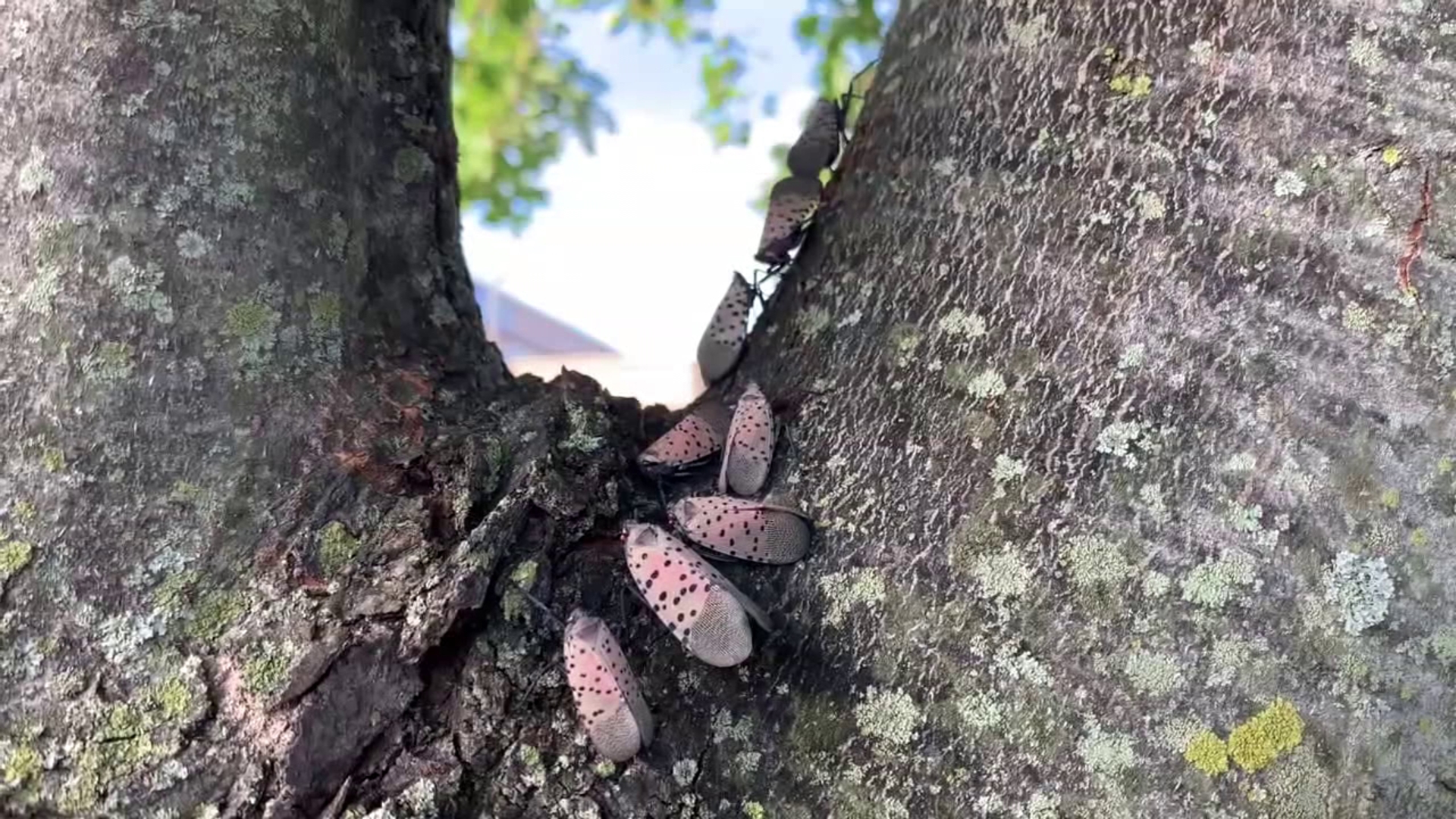LYCOMING COUNTY, Pa. — As people head outside to enjoy the warm weather, experts say you should be on the lookout for spotted lanternflies. Eggs have already started hatching in the warmer parts of the Commonwealth.
"Traditionally, lanternflies hatch around May 15, so right in time for Mother's Day each year. At first, they're very small, so they hatch, they're about the size of a tick, like the really small ones. They're hard to see and they're going to be feeding on things like the new growth that are shooting up off trees, things like that," said Jay Losiewicz, the deputy communications director with the Department of Agriculture.
Losiewicz says warmer weather can cause spotted lanternflies to hatch earlier, but depending on where you live, you may not see as many as in years past.
"Typically, you get a year or two that's really bad, and then it tapers off, so in our neck of the woods here, you'll still see some around, but it should be fewer numbers overall. That's been the trend. Now, will they come back into an area after the fact? We're not sure. We're still kind of weighing that one."
But, according to reports from Penn State Extension, spotted lanternfly numbers have slowly been going up in Lycoming County.
"In 2019, we had five reports from reporters, from public reporters. By 2021, we were up 18. Last year, 2023, we had 119. So, by that scale, I would say you're kind of hitting the heaviest infestation right now," Losiewicz said.
Spotted lanternflies are an invasive species in Pennsylvania that feed on vines, trees, and other plants.
"On their own, they typically don't do enough damage to kill a plant or kill a tree or a shrub, but they will stress them out."
52 counties in Pennsylvania, including much of northeastern and central Pennsylvania, are on the state's spotted lanternfly quarantine list. This means people can't transport the lanternflies or eggs out of the quarantine area.
If you see a spotted lanternfly, the state asks you to squish it. If you find an egg mass on a tree or plant, you should squish it and scrape it off.
CLICK HERE for more information from the Department of Agriculture.

